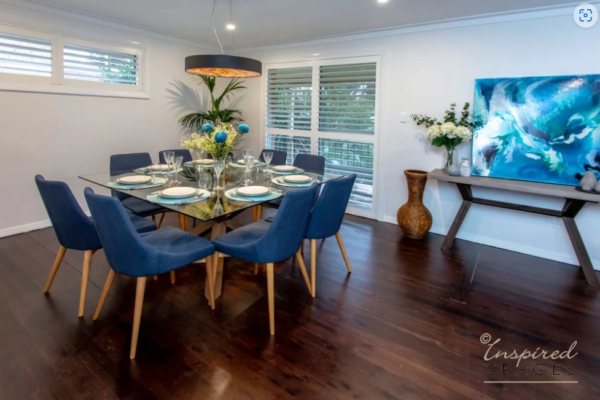You’ve made the decision to go with timber flooring for your home, but which one should you choose?
It has long been a popular choice for homeowners looking to add warmth and elegance to their living spaces. Timber flooring, often referred to as hardwood flooring, is renowned for its versatility and natural beauty.
Timber Is A Great Choice For Interiors
Firstly, you’ve made a great choice by choosing timber flooring for your home. Timber will always add value to your home and it compliments any interior.
Not only versatile it offers a timeless, streamlined look that can be a home’s most striking feature. Low-maintenance and non-allergenic, timber also offers natural insulation so is perfect for any season.
With an array of timber options available, making the right choice for your home can be a little daunting. Let’s help you make an informed decision that suits your style and budget by exploring various types of timber flooring available.

Popular Timber For Interior Spaces
When installing a timber floor, you are virtually unlimited in the types of timber that you can use. Following are some of the more popular timber species to select from:
- Jarra
- Blackbutt
- Spotted Gum
- Tasmanian Oak
- Ironwood
- Merbau
- Victorian Ash
- Grey Ironbark
- Pacific Kauri
- Northern Red
- Cedar
- Bamboo
Colour Is Key For Timber Flooring
With so many types and styles available start simple with picking the colour of timber, be it dark, light or mid-tones.
Light Versus Dark Timber Flooring
To bring a sense of light and roominess to a small space, opt for lighter timbers but please note if you have dark antique furniture, don’t install pale flooring with cooler undertones, as it will clash.
Light Timber Flooring In Interiors
Light floors suit beachy and shabby-chic looks, whereas dark floors or mid-tone caramels work if your style is more classic.
Dark Timber Flooring In Interiors
Dark flooring is the current trend at the moment and will make your home look very sophisticated, but they will show the dirt and will also make a tight space feel more enclosed.
All timbers have different colour undertones to them. Some species have warm yellow or red undertones whereas others have cooler, more greyish undertones. When making your decision, consider any colours already in your home and what best suits your style.
As well as colours, planks come in different widths and lengths. Again, choose according to what size best suits your desired look.

Select The Right Grade Of Your Timber Floor
To choose the grade is to decide if you prefer the character of knotty, veined wood or instead the smooth, unspoiled timber floor with little ‘feature’. Timber suppliers will usually offer 3 grades:
- light or select feature (offers a subtle, clean grade across the board)
- moderate or standard
- high feature (for a unique, aged look)
Solid Timber vs Engineered Timber Floors
Let’s start with what solid timber and engineered timber floors have in common:
- They are both hardwood timbers
- They can both be sanded down (although hardwood more than engineered)
Solid Timber Flooring
Solid wood is milled from a single 3/4″ thick piece of hardwood. It expands and contracts with changes in your home’s relative humidity. It offers exceptional durability and longevity and can be sanded and refinished multiple times.
Installation Of Solid Timber Flooring
This is the traditional type of timber flooring that is nailed down or secretly nailed down on bearers and joists. Boral has solid timber flooring in their range that can be even glued down over existing floors. Solid timber floor requires professional installation.
Engineered Or Pre-finished Timber Flooring
Engineered wood which is also called pre-finished wood is produced with 3 to 5 layers of hardwood. Each layer is stacked in a cross-grain configuration and bonded together under heat and pressure. Engineered wood is more stable than solid hardwood and less prone to warping. It can be sanded and refinished, but fewer times than compared to solid hardwood.
Installation Of Engineered Or Pre-Finished Timber Flooring
These floor boards can be:
- glued down
- installed floating over existing floors such as timber, concrete, tiles, particleboard, plywood

Bamboo Flooring
Though bamboo being technically a grass, it’s a renewable resource that grows fast and is harder than hardwood timber. With its affordable pricing as well as its strength and durability, bamboo flooring is a great alternative to timber.
Gone are the days that bamboo comes in limited shades only, nowadays you can get everything from white-wash to a near black colour with blond, honey and coffee colours in between.
Quick Overview:
- Appealing Aesthetics: Timber flooring brings a natural warmth and charm to any room with its unique patterns, rich colours and elegant textures.
- Durability: High-quality timber floors are incredibly durable and with the right care and maintenance can last for generations.
- Easy to maintain: Timber floors are relatively easy to maintain and care for. Regular sweeping/vacuuming, damp mopping and the occasional polish are all that’s required for their upkeep (NB: always follow manufacturers’ instructions). The use of furniture pads or felt protectors on furniture and legs of chairs will help prevent scratches.
- Sustainability: Many timber flooring options are sourced from sustainable forests.
- Added Value: The elegance and durability of hardwood floors will always increase the resale value of your home.
Get A Professional Opinion On Timber Flooring
Overall whatever timber flooring you choose you’re guaranteed to bring warmth into the household offering an inviting ambiance into your interiors. Timber floors are a timeless choice that can enhance the beauty and value of your home.
Understanding the different choices available on the market can help you to choose the right timber flooring to suit your budget, style and lifestyle needs.
To guarantee the perfect choice it always helps to get a professional opinion, and we would love to provide this for you.





Leave A Comment Or Ask A Question